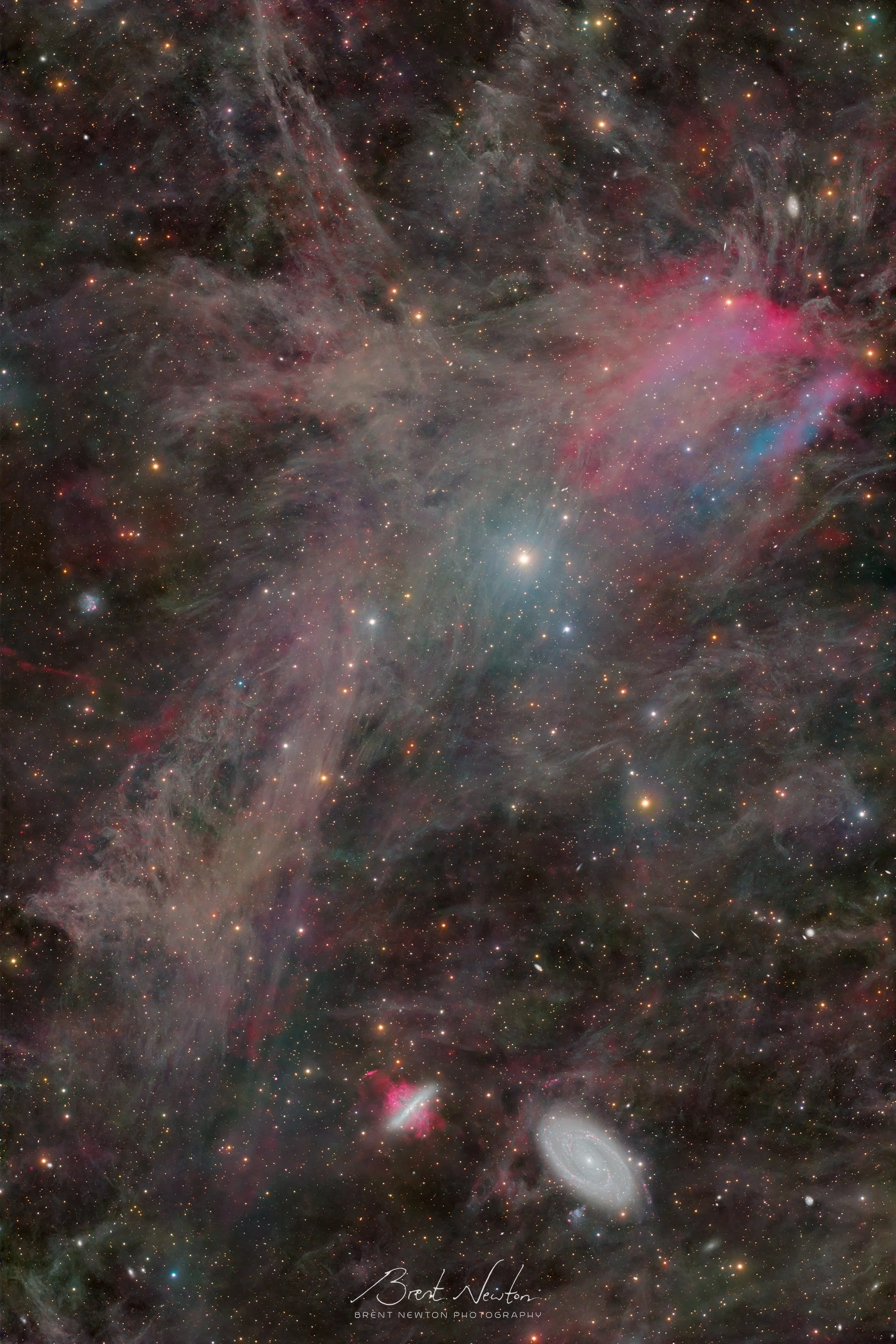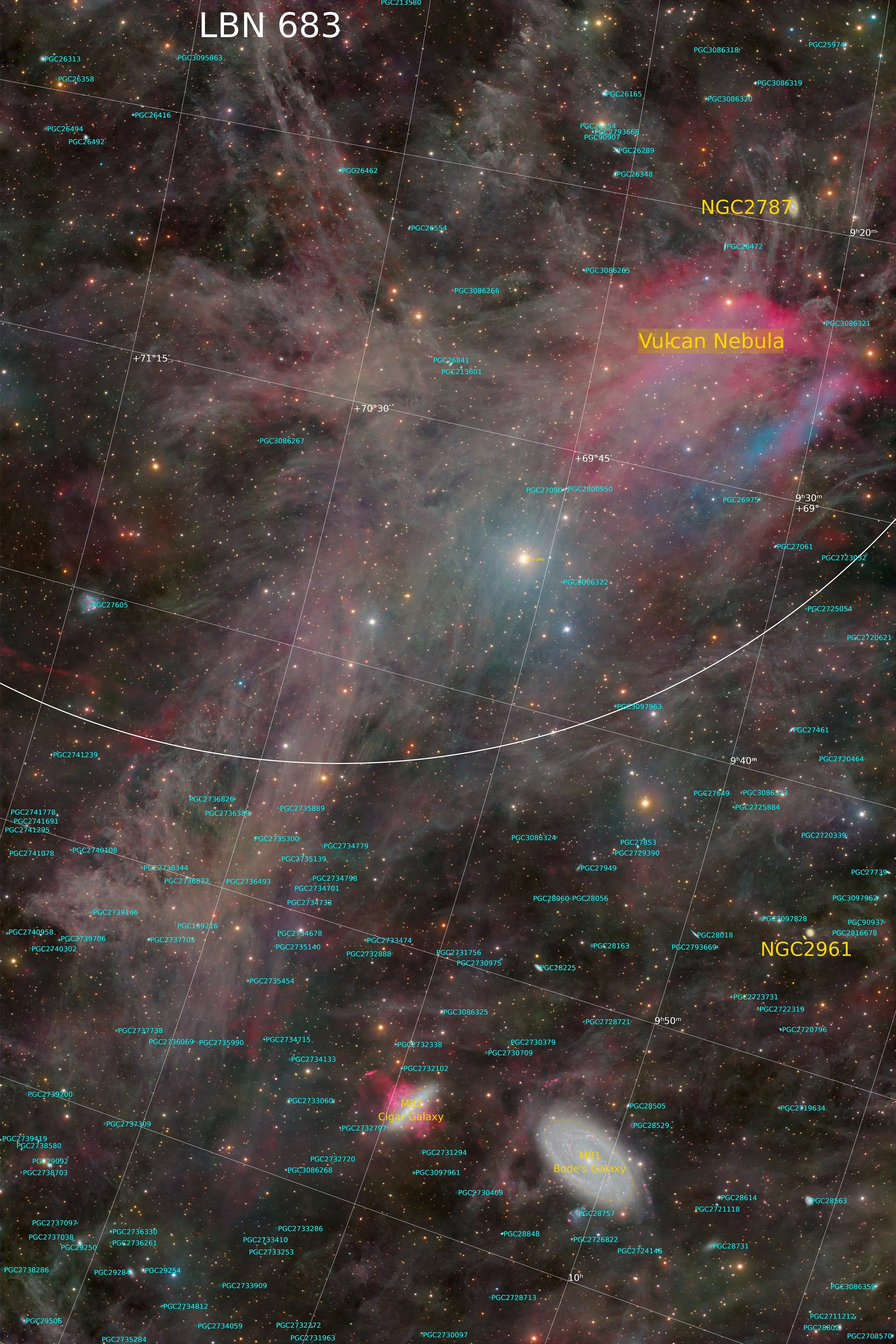The Flying Fish
Image Details:
The M81 and M82 galaxies seen near the bottom of the photo are common Spring targets in the Northern hemisphere, but the region of sky also contains a significant amount of nebulosity throughout, mostly in the form of Integrated Flux Nebula. IFN consists of diffuse clouds which are illuminated by the dim but combined light of the Milky Way, making it difficult to capture from light polluted skies in good detail. From the dark skies of Central TX (and after more than 190 hours of time in capture), it is readily visible.
This shot also contains another detail rarely seen without additional effort (even from dark skies) which is called the Vulcan Nebula (the Red and Blue section in the upper right). This nebula is extremely dim and required over two-thirds of the total capture time despite revealing little else throughout the shot. This nebula was, to my best estimation, first captured in surveys over 20 years ago, though what would be recognized as modern quality photographs only started being posted online in the past few years. Not much is known about it but the little information that has been gleaned indicates it is not a Planetary Nebula.
I pushed the data for this shot, especially the Hydrogen narrowband, probably harder than I should have. What is no doubt noise still appears throughout the shot in the form of faint red spots. Astrophotography works through stacking, but stacking is an asymptotic method of increasing Signal to Noise Ratios (SNR), so any doubling of quality requires quadrupling the total capture time - such a thing becomes unrealistic, especially given this shot took the better part of 2.5 months. Fortunately I was able to combine my efforts in capture with many others, and while my totals involved about 164 hours (though higher totals were used for the collaboration that I did not use on this shot), overall our efforts totaled at 1,650 hours, leading to an Image of the Day Award on Astrobin.
Equipment:
TS Optics 86mm Petzval (459mm Focal Length F/5.4)
ZWO ASI6200MM-P, Antlia Filters
AstroPhysics Mach2GTO Mount
Autoguiding: Orion 50mm Guidescope + ZWO ASI174MM
Exposures:
Luminance: 218x300” (Total: 18h 10m)
Red, Green, Blue: 122, 114, 110x300” (Total: 28h 50m)
Hydrogen-Alpha 3nm: 323x600” (Total: 53h 20m)
Oxygen-III 3nm: 380x600” (Total: 63h 20m)
Misc Details:
Capture Software: N.I.N.A. (capture), PHD2 (guiding)
Processing Software: PixInsight
Taken from: Starfront Observatories, TX
Capture Dates: 15-16, 19, 23-25, 27-28 February, 5, 7, 9-12, 15-16, 20, 22-24, 28, 30-31 March, 2, 6-11 April, 2025

